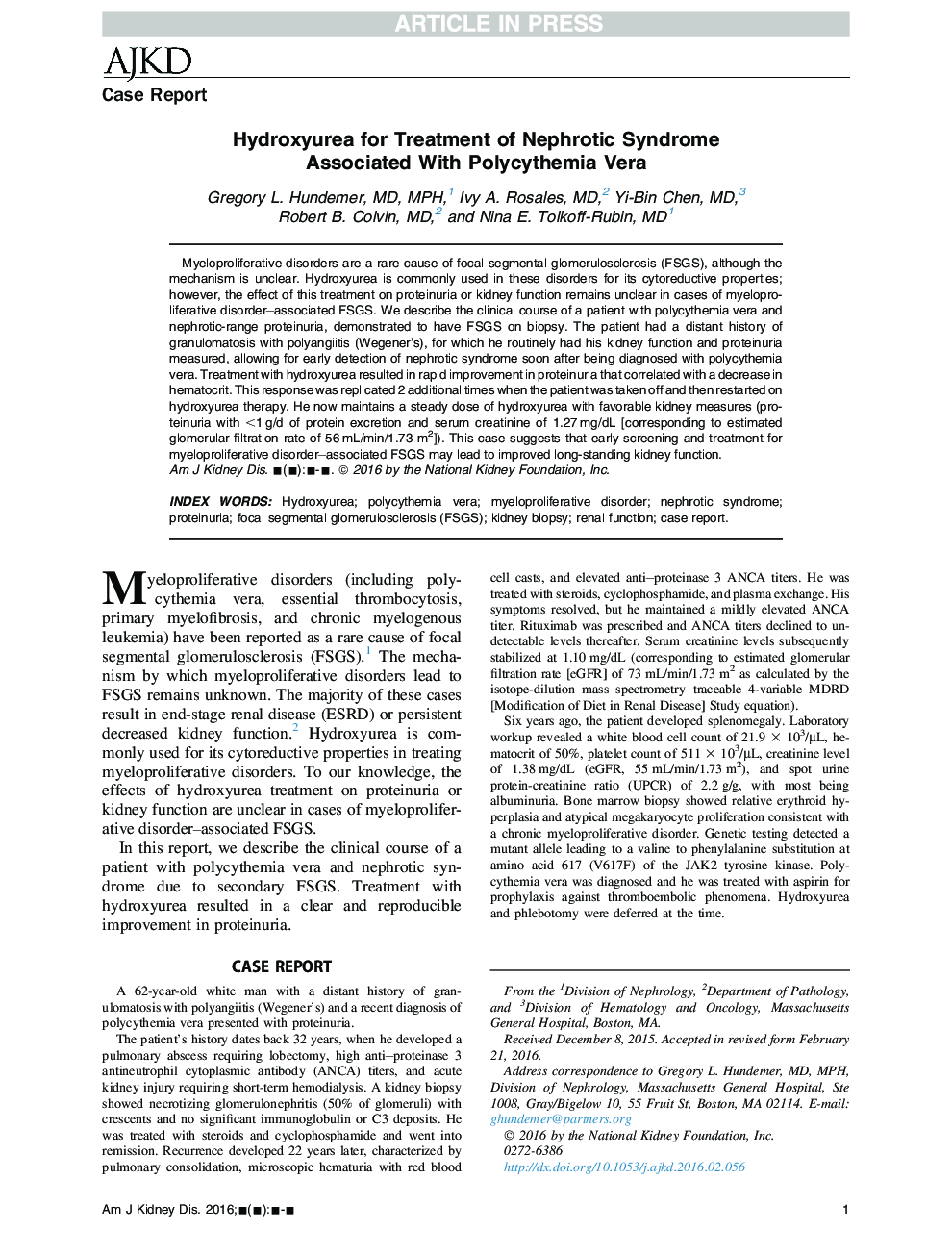| Article ID | Journal | Published Year | Pages | File Type |
|---|---|---|---|---|
| 6156363 | American Journal of Kidney Diseases | 2016 | 4 Pages |
Abstract
Myeloproliferative disorders are a rare cause of focal segmental glomerulosclerosis (FSGS), although the mechanism is unclear. Hydroxyurea is commonly used in these disorders for its cytoreductive properties; however, the effect of this treatment on proteinuria or kidney function remains unclear in cases of myeloproliferative disorder-associated FSGS. We describe the clinical course of a patient with polycythemia vera and nephrotic-range proteinuria, demonstrated to have FSGS on biopsy. The patient had a distant history of granulomatosis with polyangiitis (Wegener's), for which he routinely had his kidney function and proteinuria measured, allowing for early detection of nephrotic syndrome soon after being diagnosed with polycythemia vera. Treatment with hydroxyurea resulted in rapid improvement in proteinuria that correlated with a decrease in hematocrit. This response was replicated 2 additional times when the patient was taken off and then restarted on hydroxyurea therapy. He now maintains a steady dose of hydroxyurea with favorable kidney measures (proteinuria with <1 g/d of protein excretion and serum creatinine of 1.27 mg/dL [corresponding to estimated glomerular filtration rate of 56 mL/min/1.73 m2]). This case suggests that early screening and treatment for myeloproliferative disorder-associated FSGS may lead to improved long-standing kidney function.
Keywords
Related Topics
Health Sciences
Medicine and Dentistry
Nephrology
Authors
Gregory L. MD, MPH, Ivy A. MD, Yi-Bin MD, Robert B. MD, Nina E. MD,
